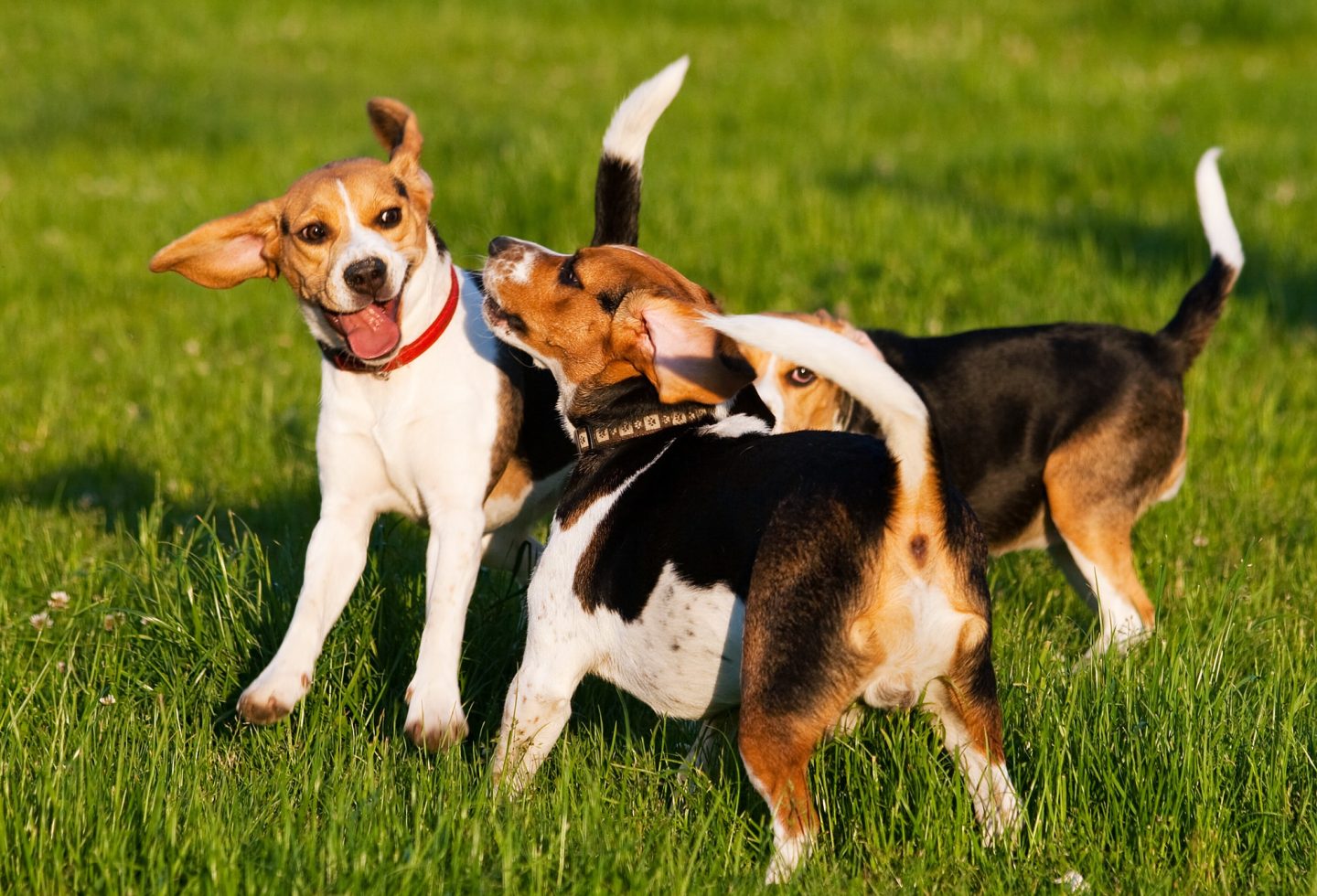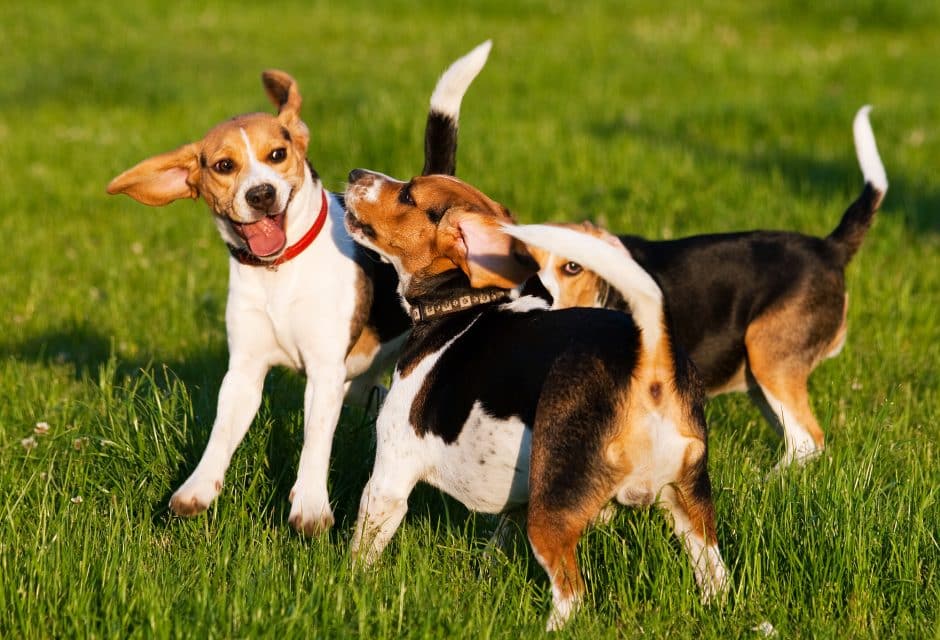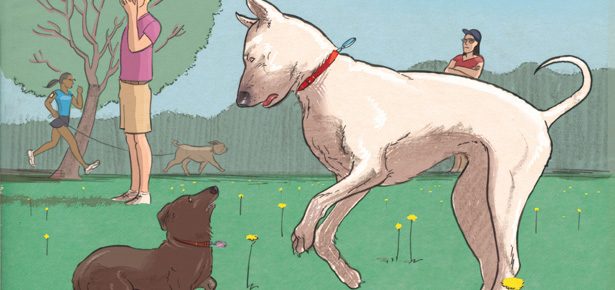

Is Your Dog Dominant or Submissive?
50 shades of grey
When it comes to dominance and submission in the dog world, there really are 50 shades of grey—at the very least. Owners often say things like, “She’s an alpha!” or “He’s really submissive with other dogs.” But, just like people, dogs are not always in charge or always ready to yield to others. For example, in a three-dog home, Golden Retriever Dusty is clearly dominant over English Bulldog Butch, but he shows deferential behavior in most interactions with German Shepherd Mandy. That rank order—understanding who’s got the rights to resources, the right of way, and more—is how peace is kept. Rank, however, is fluid, and depends on various factors. A new dog coming into a home could upset the existing order. Furthermore, a high-ranking dog does not necessarily always eat first or grab a valued resource such as a toy first; it depends on what is important to that dog.
Although who’s in charge isn’t always clear-cut, there is specific body language that can indicate dominance or submission. Individual facets should be assessed as part of an entire display and read in the context of the situation.
Dominance
A dominance display broadcasts, “I am in charge here!” The dog tries to make himself look as big as possible by standing tall, perhaps even being up on his toes. The body is stiff. Hackles may be raised. He may stare. Ears are up and forward. The tail is held high and may be curved over the back. If there is wagging, it is most likely in a stiff, moderate arc, like a flag waving. To make his point, the head or chin may be placed over the shoulder or back of another dog. If the other dog is on his back, the dominant dog might stand over him.
Submission
In direct contrast, submissive body language broadcasts, “Don’t hurt me!” or “I am not a threat!” The dog wants to make himself appear as small as possible. The body may be lowered, even to the ground. Ears are back. Eyes are averted. The tail is held low and possibly even tucked. In an extreme display of submission, the dog might lie on his back, exposing his vulnerable underbelly.
There is a lot more to the dominance-submission paradigm, however, and it can be confusing. A dog who is normally dominant over another, for example, will sometimes allow that other dog primary access to a valued resource; it all depends on how important that resource is to the top dog. During play, dogs use dominant or submissive body language in the context of fun and may trade off roles. So how can we tell? It’s not as though dogs walk around with a scarlet letter “D” or “S” glowing on their furry heads! It takes time and experience to truly understand the fine balance of power between dogs. One thing we do know: dogs don’t consider us to be of their species, which is one reason being heavy-handed in the name of showing dogs “who’s dominant” is folly at best.
Join the newsletter and never miss out on dog content again!
"*" indicates required fields
By clicking the arrow, you agree to our web Terms of Use and Privacy & Cookie Policy. Easy unsubscribe links are provided in every email.





